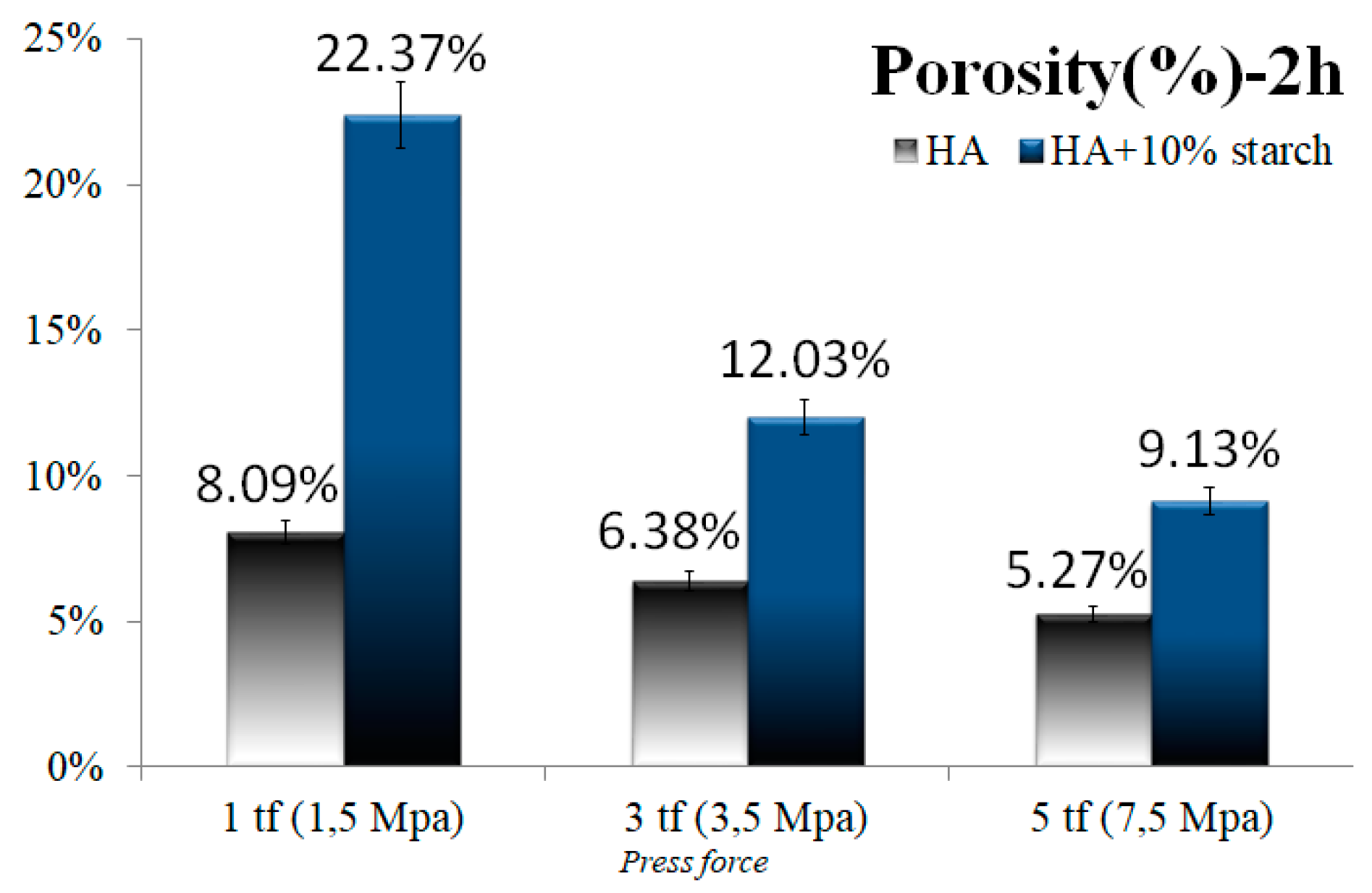Studies on Obtaining Porous Hydroxyapatite Structures Using Porogen Agents of Natural Origin †
Acknowledgments
References
- Ion, R.M.; Carutiu, D.T.; Fierascu, R.C.; Fierascu, I. Chalk stone restoration with hydroxyapatite-based nanoparticles. Sci. Bull. Valahia Univ. Mater. Mech. 2014, 9, 16–19. [Google Scholar]
- Miculescu, F.; Maidaniuc, A.; Voicu, Ș.I.; Thakur, V.K.; Stan, G.E.; Cioca, L.T. Progress in hydroxyapatite–starch based sustainable biomaterials for biomedical bone substitution applications. ACS Sustain. Chem. Eng. 2017, 5, 8491–8512. [Google Scholar] [CrossRef]
- Miculescu, F.; Maidaniuc, A.; Miculescu, M.; Batalu, N.D.; Ciocoiu, R.C.; Voicu, Ș.I.; Stan, G.E.; Tahkur, V.K. Synthesis and Characterization of Jellified Composites from Bovine Bone-Derived Hydroxyapatite and Starch as Precusors for Robocasting. ACS Omega 2018, 3, 1338–1349. [Google Scholar] [CrossRef] [PubMed]
- Renders, G.A.P.; Mulder, L.; van Ruijven, L.J.; van Eijden, T.M.G.J. Porosity of human mandibular condylar bone. J. Anat. 2007, 210, 239–248. [Google Scholar] [CrossRef] [PubMed]

© 2019 by the authors. Licensee MDPI, Basel, Switzerland. This article is an open access article distributed under the terms and conditions of the Creative Commons Attribution (CC BY) license (https://creativecommons.org/licenses/by/4.0/).
Share and Cite
Copilu, D.-L.; Maidaniuc, A.; Butte, T.-M.; Miculescu, F.; Stan, G.E.; Ion, R.-M. Studies on Obtaining Porous Hydroxyapatite Structures Using Porogen Agents of Natural Origin. Proceedings 2019, 29, 13. https://doi.org/10.3390/proceedings2019029013
Copilu D-L, Maidaniuc A, Butte T-M, Miculescu F, Stan GE, Ion R-M. Studies on Obtaining Porous Hydroxyapatite Structures Using Porogen Agents of Natural Origin. Proceedings. 2019; 29(1):13. https://doi.org/10.3390/proceedings2019029013
Chicago/Turabian StyleCopilu, Denisa-Loredana, Andreea Maidaniuc, Tudor-Mihai Butte, Florin Miculescu, George E. Stan, and Rodica-Mariana Ion. 2019. "Studies on Obtaining Porous Hydroxyapatite Structures Using Porogen Agents of Natural Origin" Proceedings 29, no. 1: 13. https://doi.org/10.3390/proceedings2019029013
APA StyleCopilu, D.-L., Maidaniuc, A., Butte, T.-M., Miculescu, F., Stan, G. E., & Ion, R.-M. (2019). Studies on Obtaining Porous Hydroxyapatite Structures Using Porogen Agents of Natural Origin. Proceedings, 29(1), 13. https://doi.org/10.3390/proceedings2019029013







